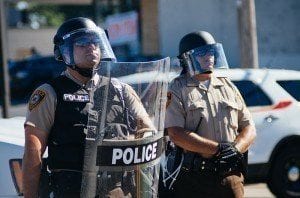
Court decision affects federal involvement
The Supreme Court on Tuesday struck down a key part of the voting rights act, making a 5-4 decision that drastically scales back the federal government’s power to reject state laws it believes discriminates against minority voters. These include efforts to tighten identification requirements and limit early voting hours at the ballot box. The Obama administration has aggressively fought these laws as they’ve swept 30 states in the past few years.
So let’s break this down. Section 5 of the Voting Rights Act, reauthorized for another 25 years in 2006, gives the federal government the ability to pre-emptively reject changes to election law in states and counties that have a history of discrimination toward minority voters. The law covers nine states and portions of seven more, most of them being in the South.
Now, the formula used to decide what states are vulnerable to this review (as Section 4 of the law describes) is based on voter turnout and registration data from decades ago. So states that had a discriminatory poll test in the 1960s and low turnout among minority voters have to obtain special permission from the federal government to change their election laws, despite the fact that turnout rates between minorities and whites has equalized.
The justices ruled that due to these facts, this is unfair to the states covered under it, as Chief Justice John Roberts wrote in the opinion: “The coverage formula that Congress reauthorized in 2006 ignores these developments, keeping the focus on decades-old date relevant to decades-old problems. Our country has changed, and while any racial discrimination in voting is too much, Congress must ensure that the legalization it passes to remedy that problem speaks to current conditions.”
Such laws have factored into several recent disputes. The Justice Department used Section 5 of the law to strike down voter ID laws in Texas and South Carolina last year, and also blocked early voting restrictions in five Florida counties. This is because minority voters are more likely than whites to vote early in person, but are less likely than whites to have a government-issued photo ID. Making things worse with partisanship, some Democrats argued that these laws were intentionally trying to suppress minority turnout in order to benefit Republicans.
Now the court has passed responsibilities to Congress, stating that it’s up to them to create a current formula based on current data (and how long will that take?). Since Congress is more divided along party lines now than in 2006, it’s highly unlikely that they’ll tackle this.
Additionally, this causes untold worries for civil rights groups, who have warned that the decision will negatively affect minorities living in covered jurisdictions. “This is a sad day for democracy,” said Myrna Perez, deputy director of the Brennan Center for Justice advocacy center. “The Voting Rights Act is a needed and instrumental tool in our fight to eradicate racial discrimination and the Supreme Court’s decision today has made it much harder to utilize this tool effectively.”















